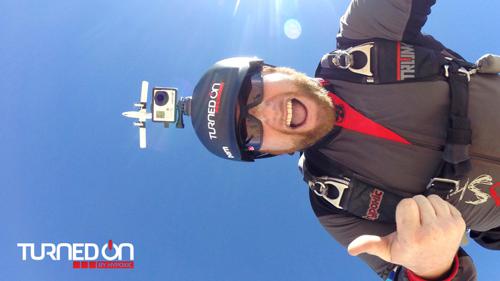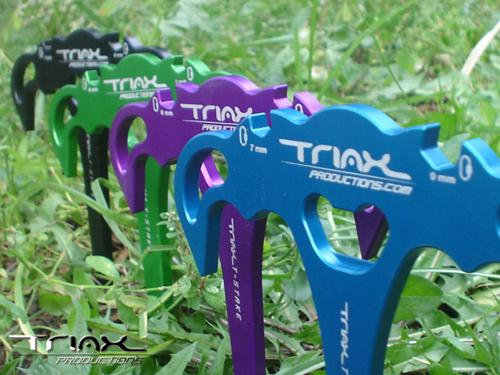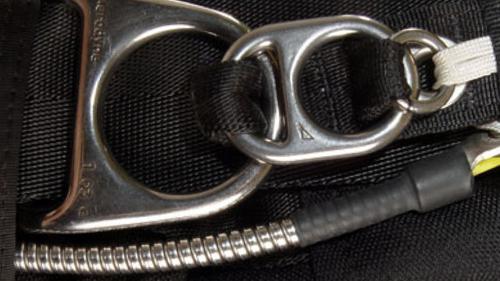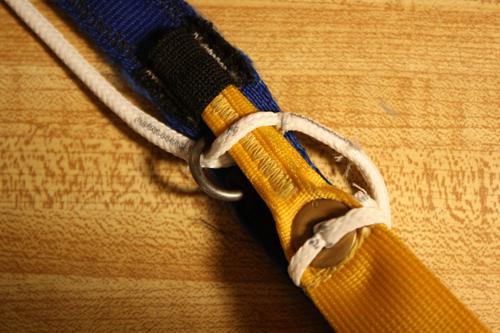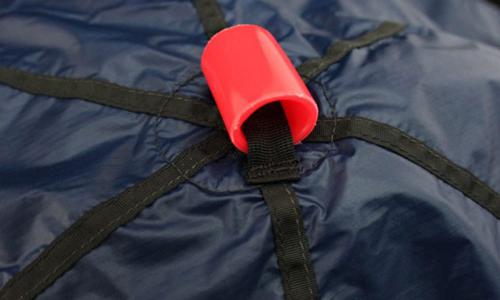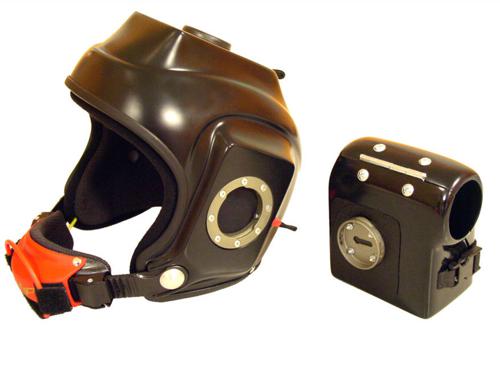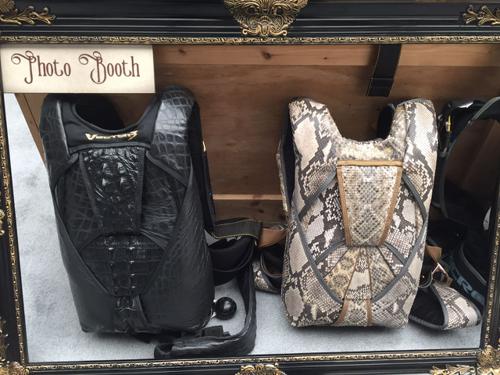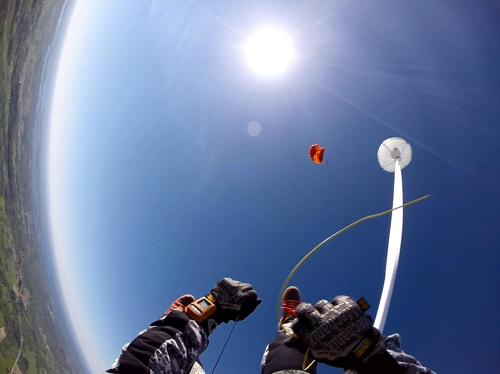A while back, I overheard a bunch of people discussing their lative merits of different types of canopies and materials for low-time jumpers. I heard some interesting misconceptions about what's dangerous and what's not, what works and what doesn't. In the interest of getting some discussion going, I figured I'd-list my top ten misconceptions about Zp canopies:
1. Zero-p canopies are dangerous.
Zp canopies have gotten a bad reputation over the years, since most hp canopies are made of Zp fabric. However, this does not mean that hp fabric itself is dangerous - it just allows smaller canopies to land well, and so is often used for smaller, high performance canopies. A large 9 cell Zp canopy is just as safe a sits same-size F111 counterpart.
In fact, it is often safer. Zp fabric keeps air from escaping though the top and bottom skins of the canopy, and thus allows better canopy pressurization at a given airspeed. This helps prevent canopy collapse in bumpy winds. In addition, the Zp fabric allows the airfoil to be a bit more efficient, and thus allows you to slow down a little more before landing. During a landing in a bad area (a power station, for example) that slower speed can be a life saver.
2. Zero-p canopies are harder to land than F111 canopies.
Not at all. In fact, the opposite is often true. Zp canopies have more lift during the flare, and that extra lift can be used to slow yourself to walking speed before touching down. F111 canopies, especially old ones, often can't do that any more -they become so porous that they stall before slowing you down enough. Often, you will see people with older F111 canopies doing all sorts of tricks to get good landings - front rise ring, taking wraps on the brake lines, and turning low. Generally, such maneuvers are not required with Zp canopies.
This year I watched maybe 200 landings at bridge day. Conditions were not great - zero wind and an uphill landing. The people who got the best landings were the people with fairly new(i.e. not porous) F111 canopies and the people with Zp (Triathlons, Sabers, even a Stiletto or two). The people with the ragged old Cruise lites and Pursuits were slamming in hard. The canopies simply did not have enough lift left to slow down the jumper before landing.
3. F111 canopies are a good choice for a first canopy.
Well, yes and no. A good, fairly new F111 canopy, loaded correctly, is indeed a good first canopy. However, you have two things against you:
Few people sell good, low-time F111 canopies anymore. Most have 500-1000 jumps on them, and at that age, they become difficult to land. A larger canopy will not be affected by this as much as a smaller canopy, so size matters. A pd230 may still land you well after 1000 jumps, since its forward speed is low to begin with. A PD150 with 1000 jumps will be very hard to land without injury for most jumpers.
It's hard to resell F111 canopies, for the very reason mentioned above. They are generally retired after about 500-1500 jumps, do you're paying about $1 per jump for them. Zp lasts much longer - you can easily get 2000 jumps out of a Sabre 150 with an occasional line replacement. This ends up costing you around $.60 a jump.
4. Zero-p canopies open really hard.
This rumor came about mainly because of the performance of the Sabre and the Monarch, two popular Zp 9-cells. It is no longer true. The Sabre was tamed by a larger slider, and mods exist for the Monarch. Newer Zp canopies, like the Triathlon, open quite reliably and comfortably. Some new Zp canopies, like the Stiletto, Spectre and Jedi, are designed to snivel for a longtime, and give extremely soft openings.
This was a boon for cameramen, who need soft openings due to all the weight on their heads.
Of course, there's a trade off between too little snivel and too much. But there are Zp canopies available that open at nearly any rate, from rapid to very slow. Packing is an important part of that scale, and between canopy selection and packing technique there should be a wide range of openings to choose from.
5. You have to get a smaller canopy to get better landings.
Not true. Many people start out on old F111 canopies, and simply assume that to get nice, soft, swooping landings like the pros, they need a small canopy like the pros. The truth is that nearly any Zp canopy will land you well, if you fly it correctly.The technique you use depends on the loading, as listed below:
6. You need to get a smaller canopy to go faster.
While it's generally true that smaller canopies go faster,there are many other options to increase your speed and turn rate without taking away wing area. Wing area is all you have keeping you in the air, and taking it away decreases the canopy's "forgiveness", or tolerance for mistakes. Some ideas for increasing speed/maneuverability without sacrificing area:
Canopy choice. The Silhouette, for example, is designed to be a faster large canopy. A 170 should give you nearly the same forward speed as a Sabre 150, with the extra forgiveness that the larger size entails.
Pilot chute. The single best thing you can do for your medium / high performance canopy is to get a collapsible pc. It will do wonders for your glide, forward speed, and flare. I highly recommend this as a first step, before you get rid of that old, doggy canopy. Even older F111's can benefit from this.
Slider. Figure out how to stow your slider somewhere. There are many different types of collapsible sliders, and they affect performance two ways - by reducing drag, and by allowing the risers to spread out more. Avoid stowing it on your jumpsuit, though - this can prevent a cutaway if you have a problem later, and has led to a few serious injuries.
Riser tricks. Mini-risers reduce drag a bit, but not a whole lot. Separate riser-keeper rear risers allow the toggles a bit more freedom, and distort the canopy a bit less when you flare, allowing a little more flare power. Front-riser handles allow you to easily add front riser, a good way to increase your speed when trying to buck a headwind (for example.)
7. You should never, ever turn near the ground.
This is a good rule of thumb for your first few jumps.However, there are times when turning near the ground is necessary, and all jumpers should know how to do this safely. Basically there are two ways to turn low - the braked turn and the flare-turn. Practice these! Both allow radical turns without a resulting dive towards the ground. Many jumpers have been killed when they found themselves flying downwind or towards an obstacle on final, and tried to turn without using these tricks.Depending on the canopy, you can safely make a 180 degree turn as low as 50 feet - if you've gotten instruction on how to do it and practiced it up high.
8. Skydive Chicago puts first-time jumpers on tiny Sabres.
Not quite, but close. They put first-time jumpers on Mantas(or have them do tandems) for the first few jumps, then transition them to hp canopies. And interestingly, there have not been more injuries as a result. I think this is because many new jumpers learn bad habits on Mantas, and these bad habits are difficult to unlearn. At Skydive Chicago, they transition early on, and get good instruction on how to fly the newer hp canopies.
This is a good model for transitioning ourselves. Whenever you're going to make a significant canopy transition (i.e.smaller, square to elliptical, etc.) get instruction! It costs little to badger a more experienced jumper or instructor into watching you land a few times, and the advice you get can be invaluable later.
9. 7 cell canopies are dogs.
Not any more! The Triathlon and the Spectre are both high performance Zp canopies, and are good choices for jumpers buying their first Zp canopy. The big difference between 7 and 9 cell canopies is aspect ratio - which is just the relationship between wingspan and front to back size. 7 cells have ar's around 2.5 to1, and 9 cells are around 3 to 1. Generally, a higher ar has a better glide ratio, but that's about the only hard-and-fast difference. Zp 7-cells can go as fast, land as well, and plane out as far as their 9-cell counterparts, if they are loaded correctly. They are a bit more forgiving at similar loadings, and are thus a really good choice for a first Zp canopy.
10. It's really hard to pack Zp fabric when it's new.
Sometimes this is true, but not always. "South African" fabric, such as the material they use in the Triathlon, is pretty easy to pack from day one. It doesn't seem to last quite as long as the more slippery PD material, though.Some canopies, like the Silhouette and the Turbo-z, mix F111 and Zp material to make a canopy that flies well and is still easy to pack.
But even a brand new Sabre is manageable, if you work at it.The psycho-pack is a good way to control an unruly canopy, and there's at least one gadget out on the market that helps you pack slippery canopies.
Copyright ©1997 Billvon Novak, Safety and Training Advisor

